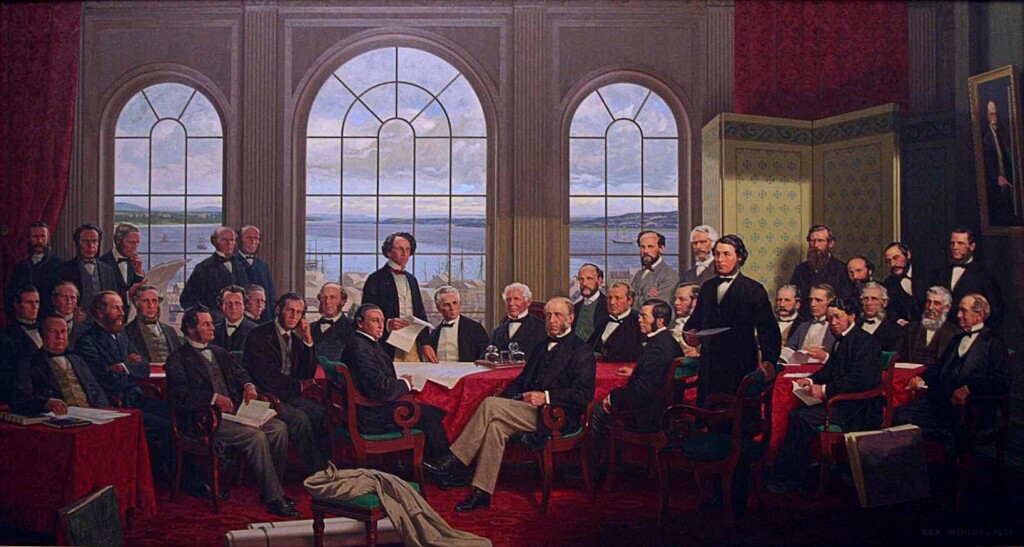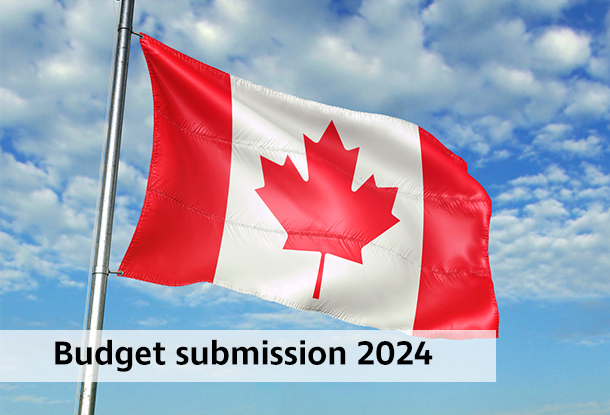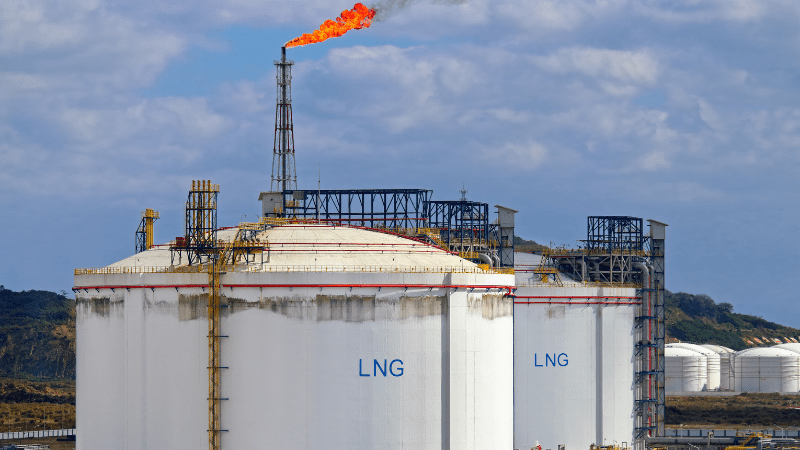Marco Levytsky, Editorial Writer.
Happy Canada Day to everyone out there. We all know July 1st is our national holiday. But do we know what it is all about? Most people do not. So here is a primer.
What we celebrate is the implementation of the British North America (BNA) Act by the British Parliament on July 1, 1867. It provided for the union (confederation) of three of the five British North American colonies into a federal state with a parliamentary system modelled on that of Britain. The three colonies were Nova Scotia, New Brunswick and the Province of Canada (which was divided into Ontario and Quebec). This Act was the foundational document of Canada’s Constitution and remained so for 115 years. It outlined the structure of government in Canada and the distribution of powers between the central Parliament and the provincial legislatures. It remained a law passed by the British Parliament and could only be changed by an act of the British Parliament. However, Westminster would act upon the recommendations of Canada’s Parliament and several amendments were passed during this period. This, however, has led to certain popular misconceptions about what the BNA Act actually established.
Number 1 misconception: It is not Canada’s Independence Day or an equivalent, thereof. It established Canada as a Dominion within the British Empire. While Canada remained more or less self-governing like other Dominions, such as Australia and New Zealand, the British government had the legal right to veto any act of the Canadian Parliament, a right that was used once in the early days of the Dominion and never again. Canadian foreign relations had to be conducted, at least formally, through the channel of the British Foreign Office. And Canada was bound by the actions of Britain in declaring war and making peace. Thus, when the United Kingdom declared war on Germany on August 4, 1918, Canada was automatically at war, as was the rest of the British Empire. Independence came on December 11, 1931 with the Statute of Westminster, which provided the same independence to other Dominions, namely Newfoundland, Australia, New Zealand, the Irish Free State and South Africa. When Great Britain declared war on Nazi Germany on September 3, 1939, Canada waited a full week before it declared war and then, only after a vote in Parliament.
But while Canada was independent insofar as legislation was concerned, it was still not a fully sovereign country as its Constitution was still in the hands of the British Parliament. That changed on April 17, 1982 with the “repatriation” of the BNA Act and the passage of the Constitution Act. At that point the BNA Act became know as the Constitution Act, 1867 and the name of our national holiday was officially changed from Dominion Day to Canada Day.
Number 2 misconception: It’s Canada’s birthday. It may be the birthday of Confederation, and the birthday of the Dominion of Canada, but Canada as a political entity had been in existence since 1791. That’s when there was an influx of United Empire loyalists (Americans who remained loyal to the British Crown after the American Revolution) to the western part of the British Colony of Quebec which, at that time, was almost totally French-speaking. As a result, the Colony of Quebec became Canada and was separated into a French-speaking Lower Canada (later called Canada East) and an English-speaking Upper Canada (later called Canada West). Upon Confederation, they became the Provinces of Quebec and Ontario respectively.
The Canada of 1867 consisted only of the two original Atlantic Provinces, as well as the St. Lawrence Valley and a strip of land above Lakes Ontario and Erie, which were the Provinces of Quebec and Ontario. But within two years a huge landmass was added. This was Rupert’s Land, and it consisted of the lands originally assigned to the Hudson’s Bay Company by Royal Charter in 1670. A tiny portion along the Red River became the “postage stamp” nucleus of the Province of Manitoba in 1870. Rupert’s Land, which became the Northwest Territories, gave Canada a common border with the Pacific Coast colony of British Columbia which joined in 1871. Two years later, tiny Prince Edward Island also joined. In 1880, the British Arctic Islands were added to Canada expanding its northern border to the North Pole. But the vast territory of Western Canada (nearly 2M sq. km. in area) remained largely uninhabited, aside from the First Nations peoples who, by the end of the 19th century had been re-settled on reserves across the Prairies and numbered, at most, in the tens of thousands, plus perhaps a few thousand other individuals including Metis, fur trappers, and early European immigrant farmers. There was great concern that a surge of American settlers could lead to demands for annexation to the United States, as had happened earlier with Mexican territory. Therefore, there was a need to bring in settlers loyal to Canada and in 1896, when Sir Clifford Sifton became Minister of the Interior under the administration of Sir Wilfred Laurier, he embarked on an ambitious project to settle the West. The settlers he had in mind were “stalwart peasants in sheep-skin coats” who could turn some of the most difficult areas of the West into productive farms. Many of these were Ukrainians and they did turn these most difficult areas into productive farms becoming a regional founding nation in the process.
As the population boomed, two new provinces were carved out of the Northwest Territories in 1905 – Alberta and Saskatchewan. Seven years later land from the territories was added to Manitoba, Ontario and Quebec, giving these provinces the boundaries, they have today. The process of expansion was completed in 1949, when Newfoundland joined Confederation. That was also the same year we acquired our own citizenship. Until that year, Canadians were officially British Subjects.
Today, Canada is a full-fledged sovereign modern democracy which celebrates its multicultural diversity, is considered one of the best places in the world to live in and continues to be a magnet for immigrants from abroad.
Yet, few of us really know our history. Perhaps because it is not as violent as that of our neighbours to the south, people sometimes think it is boring, Far from it. It is an exciting history of progress and development and one we should all strive to learn. In the French words to our National Anthem – “Ton histoire est une épopée, Des plus brillants exploits.”
Share on Social Media


































